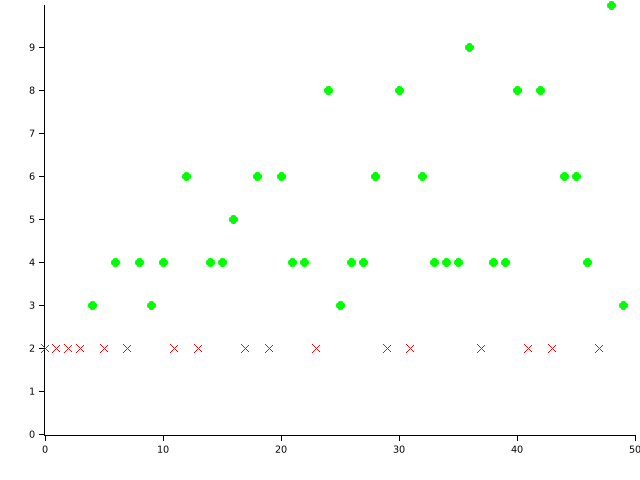[−][src]Module plotters::element
Defines the drawing elements, the high-level drawing unit in Plotters drawing system
Introduction
An element is the drawing unit for Plotter's high-level drawing API.
Different from low-level drawing API, an element is a logic unit of component in the image.
There are few built-in elements, including Circle, Pixel, Rectangle, Path, Text, etc.
All element can be drawn onto the drawing area using API DrawingArea::draw(...).
Plotters use "iterator of elements" as the abstraction of any type of plot.
Implementing your own element
You can also define your own element, CandleStick is a good sample of implementing complex
element. There are two trait required for an element:
PointCollection- the struct should be able to return an iterator of key-points under guest coordinateDrawable- the struct is a pending drawing operation on a drawing backend with pixel-based coordinate
An example of element that draws a red "X" in a red rectangle onto the backend:
use std::iter::{Once, once}; use plotters::element::{PointCollection, Drawable}; use plotters::drawing::backend::{BackendCoord, DrawingErrorKind}; use plotters::style::IntoTextStyle; use plotters::prelude::*; // Any example drawing a red X struct RedBoxedX((i32, i32)); // For any reference to RedX, we can convert it into an iterator of points impl <'a> PointCollection<'a, (i32, i32)> for &'a RedBoxedX { type Borrow = &'a (i32, i32); type IntoIter = Once<&'a (i32, i32)>; fn point_iter(self) -> Self::IntoIter { once(&self.0) } } // How to actually draw this element impl <DB:DrawingBackend> Drawable<DB> for RedBoxedX { fn draw<I:Iterator<Item = BackendCoord>>( &self, mut pos: I, backend: &mut DB, _: (u32, u32), ) -> Result<(), DrawingErrorKind<DB::ErrorType>> { let pos = pos.next().unwrap(); let color = RED.to_rgba(); backend.draw_rect(pos, (pos.0 + 10, pos.1 + 12), &color, false)?; let text_style = &("sans-serif", 20).into_text_style(backend).color(&color); backend.draw_text("X", &text_style, pos) } } fn main() -> Result<(), Box<dyn std::error::Error>> { let root = BitMapBackend::new( "plotters-doc-data/element-0.png", (640, 480) ).into_drawing_area(); root.draw(&RedBoxedX((200, 200)))?; Ok(()) }

Composable Elements
You also have an convenient way to build an element that isn't built into the Plotters library by
combining existing elements into a logic group. To build an composable element, you need to use an
logic empty element that draws nothing to the backend but denotes the relative zero point of the logical
group. Any element defined with pixel based offset coordinate can be added into the group later using
the + operator.
For example, the red boxed X element can be implemented with Composable element in the following way:
use plotters::prelude::*; fn main() -> Result<(), Box<dyn std::error::Error>> { let root = BitMapBackend::new( "plotters-doc-data/element-1.png", (640, 480) ).into_drawing_area(); let font:FontDesc = ("sans-serif", 20).into(); root.draw(&(EmptyElement::at((200, 200)) + Text::new("X", (0, 0), &"sans-serif".into_font().resize(20.0).color(&RED)) + Rectangle::new([(0,0), (10, 12)], &RED) ))?; Ok(()) }

Dynamic Elements
By default, Plotters uses static dispatch for all the elements and series. For example,
the ChartContext::draw_series method accepts an iterator of T where type T implements
all the traits a element should implement. Although, we can use the series of composable element
for complex series drawing. But sometimes, we still want to make the series heterogynous, which means
the iterator should be able to holds elements in different type.
For example, a point series with cross and circle. This requires the dynamically dispatched elements.
In plotters, all the elements can be converted into DynElement, the dynamic dispatch container for
all elements (include external implemented ones).
Plotters automatically implements IntoDynElement for all elements, by doing so, any dynamic element should have
into_dyn function which would wrap the element into a dynamic element wrapper.
For example, the following code counts the number of factors of integer and mark all prime numbers in cross.
use plotters::prelude::*; fn num_of_factor(n: i32) -> i32 { let mut ret = 2; for i in 2..n { if i * i > n { break; } if n % i == 0 { if i * i != n { ret += 2; } else { ret += 1; } } } return ret; } fn main() -> Result<(), Box<dyn std::error::Error>> { let root = BitMapBackend::new("plotters-doc-data/element-3.png", (640, 480)) .into_drawing_area(); root.fill(&WHITE)?; let mut chart = ChartBuilder::on(&root) .x_label_area_size(40) .y_label_area_size(40) .margin(5) .build_ranged(0..50, 0..10)?; chart .configure_mesh() .disable_x_mesh() .disable_y_mesh() .draw()?; chart.draw_series((0..50).map(|x| { let center = (x, num_of_factor(x)); // Although the arms of if statement has different types, // but they can be placed into a dynamic element wrapper, // by doing so, the type is unified. if center.1 == 2 { Cross::new(center, 4, Into::<ShapeStyle>::into(&RED).filled()).into_dyn() } else { Circle::new(center, 4, Into::<ShapeStyle>::into(&GREEN).filled()).into_dyn() } }))?; Ok(()) }

Structs
| BitMapElement | The element that contains a bitmap on it |
| Boxplot | The boxplot element |
| CandleStick | The candlestick data point element |
| Circle | A circle element |
| ComposedElement | The composed element which has at least two components |
| Cross | Describe a cross |
| DynElement | The container for a dynamically dispatched element |
| EmptyElement | An empty composable element, which is the start point of an ad-hoc composable element |
| ErrorBar | |
| ErrorBarOrientH | |
| ErrorBarOrientV | |
| MultiLineText | An multi-line text element. The |
| PathElement | An element of a series of connected lines |
| Pixel | An element of a single pixel |
| Polygon | An element of a filled polygon |
| Rectangle | A rectangle element |
| Text | A single line text element. This can be owned or borrowed string, dependents on
|
| TriangleMarker | Describe a triangle marker |
Traits
| Drawable | The trait indicates we are able to draw it on a drawing area |
| IntoDynElement | The trait that makes the conversion from the statically dispatched element to the dynamically dispatched element |
| PointCollection | A type which is logically a collection of points, under any given coordinate system |
| PointElement | The element that used to describe a point |
Type Definitions
| Path | Deprecated |